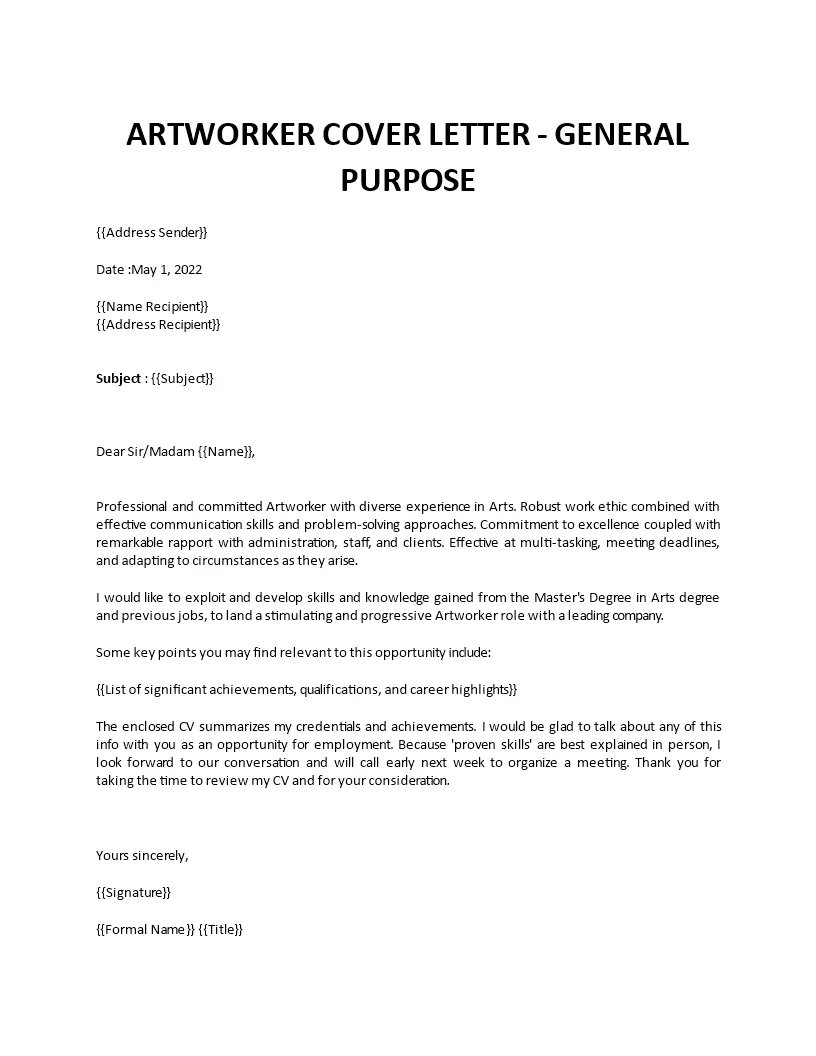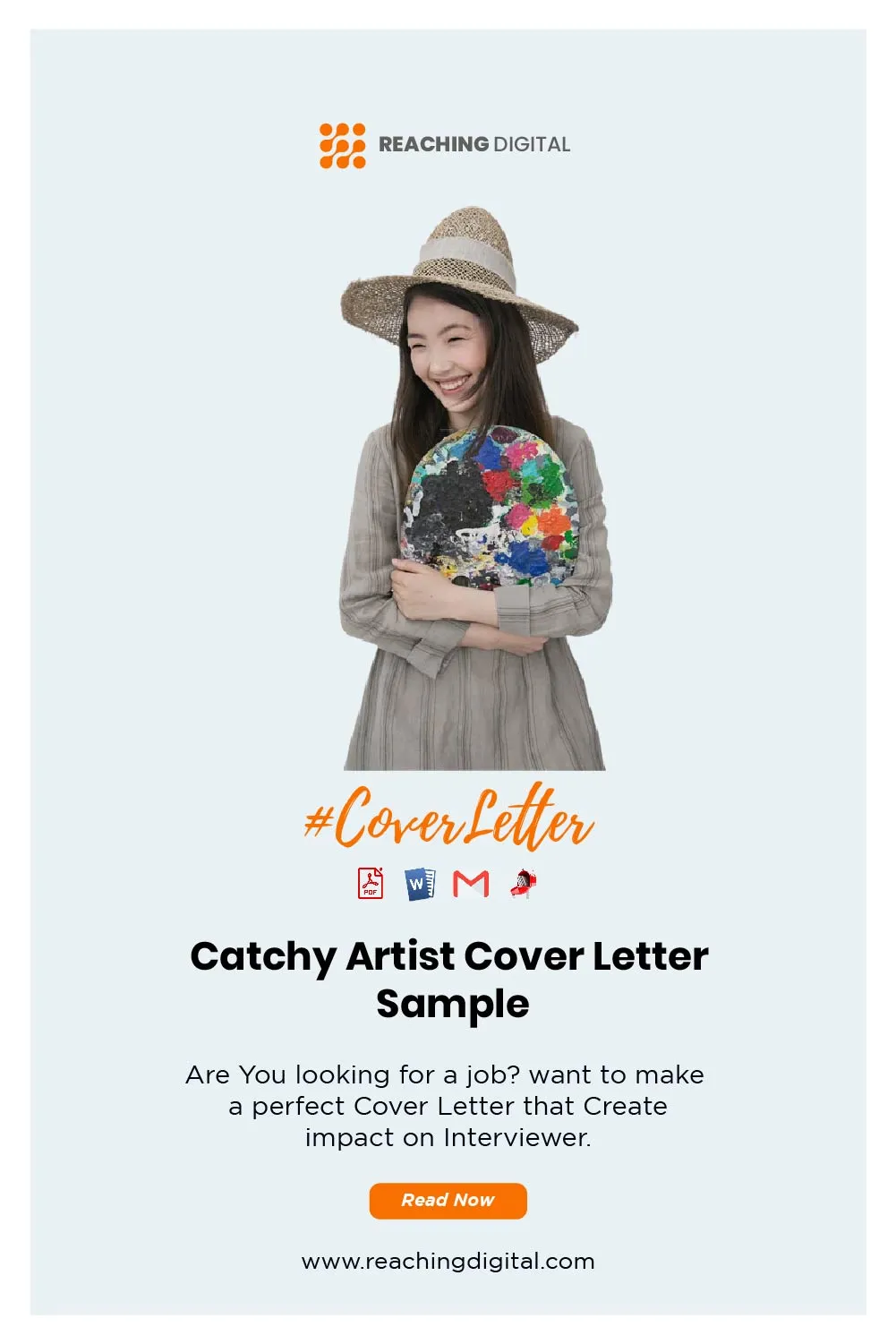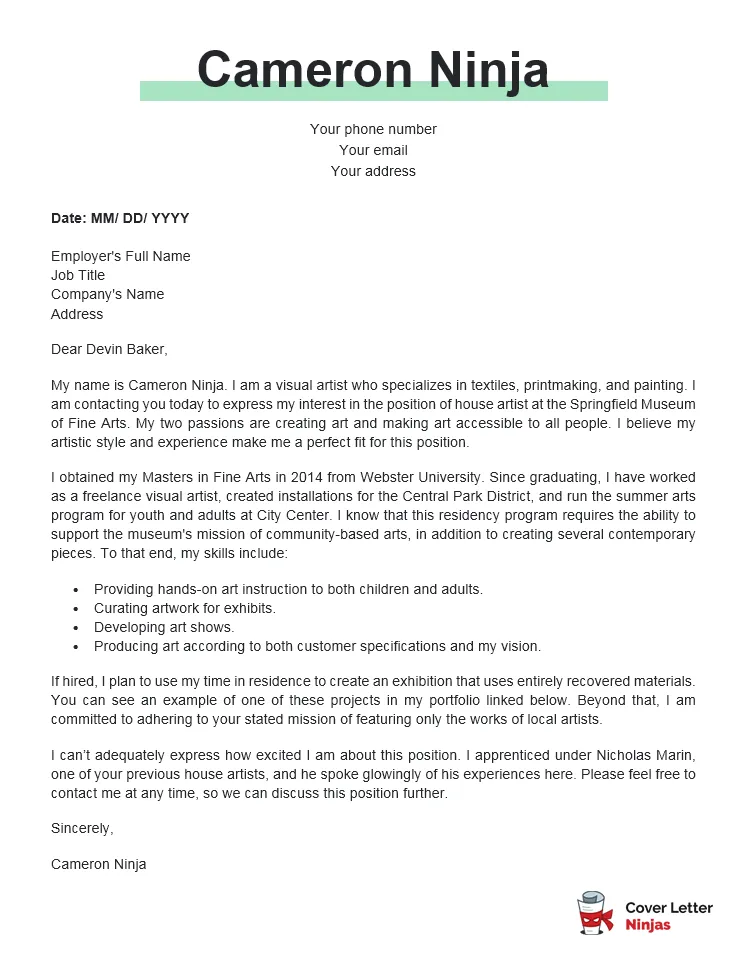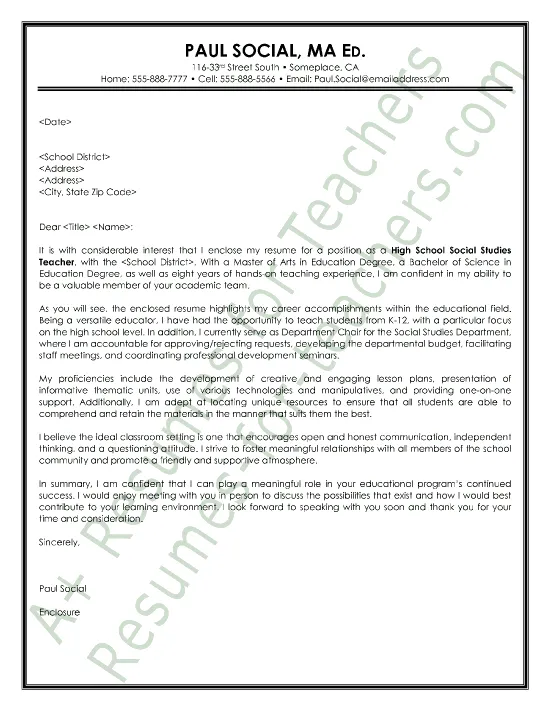Landing an art job is a competitive endeavor, and your cover letter is often the first impression you make on a potential employer. A well-crafted cover letter can be the key to unlocking your dream art job. It’s your opportunity to showcase your skills, experience, and passion in a concise and engaging way. This guide provides ten essential tips to help you write a cover letter that stands out and gets you noticed. From tailoring your letter to the specific job requirements to highlighting your unique talents, these tips will help you navigate the job application process with confidence and increase your chances of success. By focusing on these crucial elements, you can transform your cover letter into a powerful tool that opens doors to exciting career opportunities in the art world, paving the way for your artistic journey.
Crafting the Perfect Cover Letter Art Job
The foundation of a successful cover letter is its structure and clarity. Begin with a compelling introduction that grabs the reader’s attention. State the position you’re applying for and briefly mention where you found the job posting. The body of your letter should then highlight your most relevant skills and experiences, using specific examples to demonstrate your capabilities. Structure your letter logically, with clear paragraphs and concise sentences. Maintain a professional tone throughout, and make sure your writing is free of grammatical errors and typos. Be sure to include a strong call to action, encouraging the employer to review your resume and portfolio. A well-crafted cover letter is not just a formality; it’s a vital tool for making a positive first impression. A meticulously crafted cover letter is your first opportunity to make a lasting impression, setting the tone for your application. By meticulously structuring your letter, you demonstrate professionalism and attention to detail, qualities highly valued in the art world, making it clear that you are a serious candidate.
Highlighting Your Skills and Experience
Your cover letter is your opportunity to shine a spotlight on your skills and experience. Instead of simply listing your qualifications, provide specific examples that demonstrate your abilities. Mention any relevant software proficiency, such as Adobe Photoshop or Illustrator. If you have experience with specific art mediums or techniques, be sure to include those details. Focus on the skills that are most relevant to the art job you are applying for. Showcase projects where you successfully applied these skills, quantifying your achievements whenever possible. For example, you might mention how you contributed to a project that increased engagement by a certain percentage. Highlight any awards, exhibitions, or recognition you’ve received. Tailor your skills to match the job description, and use action verbs to make your accomplishments more impactful. By effectively highlighting your skills and experience, you make a compelling case for why you’re the ideal candidate for the position. Think of it as creating a snapshot of your professional self.
Tailoring Your Cover Letter to the Job

Generic cover letters rarely make a lasting impression. Take the time to customize each cover letter to the specific job you’re applying for. Carefully review the job description and identify the key skills and qualifications the employer is seeking. Use the job description as a guide to tailor your cover letter to match the requirements. Highlight the experiences and skills that align with the job requirements. Demonstrate that you understand the company’s needs and how your skills can contribute to their success. This personalized approach demonstrates your genuine interest in the position and increases your chances of getting noticed. Customize the letter to reflect the company’s culture, showing that you’ve done your research and understand their values and mission. This personalized touch transforms your cover letter from a standard application to a compelling statement of intent, making it more relevant and engaging for the hiring manager, and also highlights your attention to detail and genuine interest.
Researching the Company
Before you start writing, research the company to understand its mission, values, and recent projects. Visiting the company website, reading their blog, or checking out their social media profiles will help you gain valuable insights. This information will help you tailor your cover letter to the specific company and demonstrate your genuine interest. Mention specific projects or initiatives that resonate with you, and explain how your skills align with their goals. Understanding the company culture is important, allowing you to align your writing style accordingly. Showing that you understand the company’s values and goals demonstrates initiative and a genuine interest in contributing to their success. Research allows you to use specific examples that show how you can contribute, making your letter more personalized and effective. This shows that you’re not just applying for a job but are enthusiastic about contributing to their team.
Showcasing Your Portfolio
Your portfolio is your primary tool to demonstrate your artistic abilities. Mention your portfolio prominently in your cover letter and provide a link to it. Make sure your portfolio is up-to-date, well-organized, and showcases your best work. Consider including a brief description of each piece in your portfolio, highlighting your creative process or any challenges you overcame. Your portfolio should be easy to navigate and reflect the type of art the company produces. If you are applying for a specific role, tailor your portfolio to showcase relevant projects. Ensure it is accessible and loads quickly. Include a call to action encouraging the hiring manager to explore your work further. Your portfolio is your chance to let your art speak for itself. Make it clear how your skills align with the job requirements. By presenting a well-curated portfolio, you provide tangible proof of your artistic capabilities, increasing the likelihood of securing an interview.
Using Keywords Effectively

Many employers use applicant tracking systems (ATS) to scan cover letters and resumes for specific keywords. Review the job description and identify the keywords that the employer uses to describe the desired skills and qualifications. Incorporate these keywords naturally into your cover letter. However, avoid keyword stuffing, as this can make your letter sound unnatural. Instead, integrate keywords seamlessly into your sentences and paragraphs. Use a variety of related terms to show that you understand the job requirements. Using keywords improves your letter’s visibility and helps it pass through the initial screening process. Use keywords in your descriptions of your skills and experiences. By using keywords strategically, you ensure that your cover letter gets noticed by both the hiring manager and the ATS system. Using appropriate keywords ensures that your application is seen by the right people, enhancing your chances of landing an interview.
Proofreading for Errors
Errors in your cover letter can create a negative impression. Proofread your letter carefully for grammatical errors, typos, and inconsistencies. Read it aloud to catch any awkward phrasing or sentences. Use a grammar checker and spell-checker to ensure accuracy. Ask a friend or colleague to review your letter for a second pair of eyes. Pay close attention to the details, such as the company name and the job title, and ensure they are correct. A polished and error-free cover letter demonstrates professionalism and attention to detail. Proofreading is a critical step. Before submitting, review the letter for errors, ensuring it is free from typos and grammatical mistakes. Taking the time to ensure your cover letter is flawless conveys professionalism and attention to detail, making a positive impression. This simple step can significantly improve your chances of landing an interview.
Following Up After Submitting
After submitting your cover letter and resume, it’s appropriate to follow up with the employer. Send a brief email to the hiring manager or the contact person mentioned in the job posting. Thank them for considering your application, and reiterate your interest in the position. In your follow-up email, you can briefly mention any relevant projects you’ve completed or skills you possess that were not included in your original application. Avoid being overly persistent, but express your eagerness to learn more about the opportunity. A polite follow-up shows your enthusiasm and commitment to the job. If you haven’t heard back within a reasonable timeframe, consider sending a follow-up email, expressing your continued interest. Following up demonstrates your proactive approach and genuine interest in the position. A brief and professional follow-up can significantly increase your chances of getting noticed.
Formatting for Readability

Make sure your cover letter is easy to read. Use a clean and professional font, such as Arial or Times New Roman, and keep the font size consistent. Use clear headings and subheadings to organize your information logically. Leave ample white space between paragraphs to enhance readability. Use bullet points to highlight your key skills and accomplishments. Ensure your cover letter is formatted consistently throughout. By following these formatting guidelines, you ensure your cover letter is easy to read and makes a positive impression. Proper formatting enhances readability, allowing the hiring manager to quickly grasp your qualifications. Effective formatting significantly improves the overall impact of your letter, making it easier for the hiring manager to review and consider your application. This ensures your key points are clear and easily accessible.
Emphasizing Your Passion
Art jobs require passion, so infuse your cover letter with your enthusiasm for your craft. Share your excitement for the company and the role. Talk about your artistic inspirations, and explain why you are drawn to the art field. Mention any personal projects or art initiatives you are working on. Show how you align with the company’s values. Let your passion shine through, and make your cover letter more memorable. Art job employers want to know you’re excited about art, so share your inspirations and artistic ambitions. Let your genuine enthusiasm for your work and the company’s mission shine through. Your passion will make your cover letter stand out from the competition and increase your chances of getting an interview. Showing your enthusiasm for art and expressing your passion for the role helps to make your cover letter more compelling and personable. Showcasing your enthusiasm can make a significant difference.
Making a Strong First Impression
Your cover letter is your first chance to make a lasting impression. Make sure that it reflects your best qualities and highlights your qualifications. Take your time to write a well-crafted cover letter, and review it multiple times. Proofread the letter for any errors and have a friend or colleague review it. Make sure that your cover letter reflects your personality and enthusiasm for the job. By following these tips, you can make a strong first impression. Show your personality and enthusiasm to make a lasting impression. Use it as an opportunity to highlight your unique skills and experiences. Your cover letter is more than a formality; it’s your chance to impress the hiring manager. A strong and well-crafted cover letter, along with a stellar portfolio, significantly enhances your chances of landing an art job. A strong and personalized cover letter can significantly boost your chances of securing an interview and launching your art career.
In conclusion, a compelling cover letter is essential for anyone seeking an art job. By following these ten tips – crafting a clear structure, highlighting your skills, tailoring it to the job, researching the company, showcasing your portfolio, using keywords, proofreading meticulously, following up appropriately, formatting for readability, and emphasizing your passion – you can create a cover letter that grabs the attention of potential employers. Remember to customize each cover letter to the specific job and company, demonstrating your genuine interest and enthusiasm. By investing time and effort in crafting a well-written cover letter, you’ll increase your chances of landing an interview and starting your dream art career.
